Talk with our local travel specialist who can help organize your trip.
20 Top Frequently Asked Questions (FAQs) about Bhutan
Bhutan is a mystical land in the South East that is as unspoiled as it is exciting. Making your plan for your next tour to Bhutan can be tiring and at times confusing due to the conciliatory directives set by the Bhutanese Government. To reserve your effort of going through numerous sources to find out about Bhutan, we have prepared an in-depth research on the 20 top frequently asked questions of Bhutan asked by travel enthusiasts.
Table of Content
- Where Is Bhutan?
- Is A Visa Required To Visit Bhutan?
- What Are The Bhutan Travel Rules?
- Is Bhutan Expensive To Visit?
- Which Currency Is Used In Bhutan?
- How To Get To Bhutan?
- Is Bhutan A Safe Country To Travel To?
- Why Is Bhutan Dubbed As The Land Of The Thunder Dragon?
- How To Hire A Guide For Bhutan?
- Do Bhutanese Speak English?
- What To Wear In Bhutan?
- What Is The Weather Like In Bhutan?
- When Is The Best Time To Travel To Bhutan?
- What’s The Food Like In Bhutan?
- Where To Stay In Bhutan?
- What Are The Things To Do In Bhutan?
- Best Places To Visit In Bhutan?
- Is Solo Traveling Allowed In Bhutan?
- Is Altitude Sickness Common In Bhutan?
- How Much Should You Tip In Bhutan?
1. Where Is Bhutan?
Bhutan is a small landlocked country located in Southeastern Asia nestled between India in the South and the Tibet Autonomous Region of China in the North. Bhutan touches the Indian state of Arunachal Pradesh in the east and Sikkim, West Bengal, and Assam to the west and south. It is cradled by the subalpine Himalayas in the north and lush subtropical plains in the west.
It spans across an area of 38,394 square km in between the latitude of latitudes 26°N and 29°N, and longitudes 88°E and 93°E. Bhutan has claimed its religious distinctiveness in the world for being largely inclined towards Buddhism.
2. Is A Visa Required To Visit Bhutan?
It is vital to know that Bhutan does not have a Visa on Arrival Service. Except for a few southeastern countries like India, Bangladesh, and the Maldives, tourists from all other countries need to get a visa for traveling to Bhutan. Applying for a visa for Bhutan is a relatively easier process than what people imagine. You cannot apply for a visa on your own so you need to book a trip with your international tour operator or a local travel agency to apply online on behalf of you. These tour agents should be registered with the Tourism Council of Bhutan. Certain documents particularly the electronic copy of your passport is required for processing by the tour agency. It costs about $40 for the application.
It will take about 72 working hours for the Tourism Council of Bhutan to process your visa. Your visa clearance letter will be sent to your tour operator, the airport immigration terminal, road checkpoints, and the airlines that you choose to fly from. Your visa is usually cleared about 1 to 2 weeks before your destined trip date. At the entry point in Bhutan, your visa will be stamped in your passport. Having the visa processing done through your tour operator makes it rather easier and hassle-free.
Recommended Read: How To Get Bhutan Visa From Nepal
3. What Are The Bhutan Travel Rules?
Tourism in Bhutan is strictly monitored by the Government. It only began in 1974 to promote the distinct culture, tradition, and landscape of Bhutan. To keep check of the environmental impact tourists can have on the unique landscape and culture of Bhutan, the government established a ‘High Value, Low Impact’ tourism which strictly meant that despite targeting only a selected number of tourists respectful towards protecting the culture of Bhutan, it would provide them the best experience in their destination of choice. Hence there are certain travel rules you need to abide by:
- If you are not the citizen of countries, India, Bangladesh, and the Maldives, you need to get a visa to travel to Bhutan
- It is a government regulation to book your travel activities only through a government licensed tour operator.
- There is a strict Minimum Daily package/minimum price of tours that a tourist should follow per night. Although expensive, it is an all-inclusive price.
4. Is Bhutan Expensive To Visit?
Compared to traveling in other countries, tourism in Bhutan is expensive. It is so because of the government's initiative to protect the culture and environment of Bhutan. The government has introduced a Minimum Daily Package where the tourist has to spend $200/night in the offseason of January, February, June, July, and August, and $250/night in the peak season like March, April, May, September, October, and November.
Despite the high cost, the Minimum Daily Package is all-inclusive consisting of:
- Accommodation in a 3-star hotel
- All meals (Breakfast, Lunch, and Dinner)
- Tea & snacks
- Camping equipment and food supplies on trekking
- Experienced Guide
- Transportation (Usually via a car) – does not include airfare to and from home country
- $65 segregated for Sustainable Development fee (for free education, free healthcare, and poverty alleviation in Bhutan)
The all-inclusive package is fair enough and seems all worth it when you get to experience the unspoiled beauty of Bhutan.
5. Which Currency Is Used In Bhutan?
Ngultrum is the official currency of Bhutan. You cannot get your hand on the currency anywhere but Bhutan. You can purchase it at the Paro International Airport, the banks in Bhutan, and major shops in the town and city areas. Do not expect to purchase Ngultrum in smaller cities and villages.
You should also note that the use of a credit card for purchases can result in a merchant fee surcharge as high as 7%. Also, ATMs cannot be found easily on the trails to the remote villages, hence it is wise to carry cash.
Ngultrum is equal to the Indian rupees. The Indian currency is also accepted in Bhutan (with exception to bigger notes like 1000 and 2000). Bhutan currency is equal to Indian rupees because both the countries have agreed to Currency pegging- to keep the same transactional value for certain years due to low competitive rate.
Where to travel next?
Get help from our travel specialists for holiday ideas that matches your interests.
6. How To Get To Bhutan?
Although there are two modes of transportation in Bhutan; by Air and by Land, entering Bhutan is mostly done by air.
- By Air: There is only one international airport in Bhutan, the Paro International Airport. Also, due to the challenging landing in the airport, there are only a handful of designated pilots who can fly internationally. Druk Air or Bhutan Airlines are the national carriers and have flights from Nepal (Kathmandu), Singapore, Bangladesh (Dhaka), Thailand (Bangkok), and India (Delhi, Kolkata, Guwahati and Bagdogra).
- By Land: Three entry points connects to Bhutan by Land, southeast, and southwest. On the southeastern end, the entry point is Samdrup Jongkhar and Gelephu. These points in the state of Assam are the less-traveled route. In the southwestern end, the more popular exit point is Phuentsholing in the state of West Bengal. The option to go by land is best if you are visiting from India.
7. Is Bhutan A Safe Country To Travel To?
It is obvious for tourists to worry about their safety while visiting foreign countries for travel. To answer this question, Bhutan is one of the safest countries to travel even if you are heading to remote routes. Crime in Bhutan is very low as the country is known best for meditation and Buddhistic belief in peace. Bhutan is a notable pioneer for being named the happiest country in the world as per the Gross National Happiness Index.
You will not have to worry about getting caught up with corrupt officials. To top it off, Bhutan is safe in the sense that its nature is unspoiled, the villages and cities are clean, and the air is good for breathing. You will not have to worry about air quality and hygiene.
Furthermore, you will be traveling with your trained and experienced tour guide with the coordination of your tour operator, so you will not have to worry about any safety issues.
8. Why Is Bhutan Dubbed As The Land Of The Thunder Dragon?
In many articles about Bhutan, you might have observed that Bhutan is synonymous with the Land of the Thunder Dragon. In the Bhutanese language, Bhutan is dubbed as ‘Druk Yul’ also translated to Land of Druk. Druk means Thunder Dragon in Tibetan and Bhutanese mythology.
According to the myth when the Drukpa Lineage founder Tsangpa Gyare built the Ralung Monastery, they experienced a violent storm followed by Thunder which they referred to as the roar of the Dragon. Considering it as an omen, the name of Ralung was changed to Drug-Ralung where Drug means ‘thunder dragon’. This is the reason Bhutan is called the Land of Thunder Dragon.
Ever since then Druk has been a valuable part of Bhutanese culture. It is also the national symbol and appears on the flag of Bhutan. In the same way, the Kings of Bhutan are also known as Druk Gyalpo in the local language which means ‘Thunder Dragon Kings’.
9. How To Hire A Guide For Bhutan?
The deliberate tourism policies of Bhutan have instilled the Minimum Tour package for each tourist per night in Bhutan. Hence having a guided tour in Bhutan is mandatory. This rate includes an experienced guide. So, you will not have to worry about finding a guide in Bhutan, on your own.
Furthermore, your tour operator employs only the trained guides who are certified by the Tourism Council of Bhutan and they speak fluent English.
10. Do Bhutanese Speak English?
Dzongkha is the national language of the Bhutan, which is predominantly spoken in the western region of Bhutan. However, there are 25 dialects spoken in Bhutan. Bhutanese people speak English as it is the medium of instruction in the schools. Hence it is easy to talk to Bhutanese people if you are fluent in English. The official documents, road signs, and even the major national newspapers are published in English making it easier for tourists to understand.
But you should note that in the remote villages Bhutanese people are not introduced to English speaking. In the Eastern region of Bhutan, the Tshangla language is spoken while in the Sothern part, the Lotsham language is spoken. Hence, in these remote areas, you can take the assistance of your guide to interacting with the locals. Some Bhutanese locals are also fluent in Hindi and Nepali Languages due to their proximity to the countries.
11. What To Wear In Bhutan?
Bhutan is a conservative country, in that sense, you will see that the locals wear a definitive dress that is not influenced by western traditions. Bhutanese locals and the government are very protective of their culture. Although not publicly disclose it is a social trend to wear clothes that fully cover your skin while visiting places of high cultural significance.
Locals are seen wearing their traditional dresses like Gho, a long robe for Men, and Kira, a knee-length dress for women. Although tourists are not expected to wear the traditional dress of Bhutan, short dresses are generally frowned upon. It is socially unacceptable to wear shorts, short skirts, unbuttoned and unzipped jackets, jeans, hats, flip-flops, and half t-shirts in monasteries and temples. A decent set of clothes for your visit to ancient Dzongs, Lhakhang, and chortens is highly recommended.
12. What Is The Weather Like In Bhutan?
The weather in Bhutan is wide-ranging from the hilly regions to the Himalayas. The Southern parts of Bhutan observe the subtropical climate, at times hot and humid. However, it is mostly unchanging throughout the year unlike that in the Himalayan region. On average, you can witness temperatures of 15 - 30 degrees Celsius/ 59 - 86 degree Fahrenheit. The central region witnesses warm summers and cool and dry winters due to the deciduous forest lines. As you reach the northern end, the weather is generally unpredictable as it witnesses a cold snowy climate in high altitude terrain. The summers are cool in the high altitudes.
The weather of Bhutan is largely affected by the North Indian Monsoon. Different months see different temperatures in Bhutan. there are four seasons in Bhutan:
- Spring in March, April, and May when the weather is pleasant. At the start of March, it is dry and in May, the lowlands witness occasional downpours.
- Summer in June, July, and August see heavy showers cross late June.
- Autumn in September, October, and November observe sunny days, and some snowfall in the higher elevation, however, the weather is pleasant.
Winter in December, January, and February throughout the country are frosty. Elevation above 3000m witness snowfall and by February the weather can drop to -1 degree Celsius/ 30.2-degree Fahrenheit in some cities.
Where to travel next?
Get help from our travel specialists for holiday ideas that matches your interests.
13. When Is The Best Time To Travel To Bhutan?
The best time to travel in Bhutan is characterized by the weather during each of the 4 seasons to the major festivals you might witness.
- The Autumn season is regarded to be the ideal season for traveling in Bhutan regardless of the altitude or place of travel. There are many tour and trekking packages in Bhutan that are best during this season. The weather is clear and cool and the sky looks ever so bright with only hints of clouds. Hence it is also the peak season to travel to Bhutan. During Autumn, you can get a chance to witness the Thimphu Tsechu, Trashigang Tsechu, Jampey Lhakhang Drup, Haa Tsechu, Tamshing Phala Choepa, Jampey Lhakhang Drup, Prakhar Tsechu, Black Necked Crane Festival, Mongar Tsechu, and Royal Highlander Festival.
- Spring Season is another common peak season to excurse around the high hills of Bhutan. Short tours and long treks are both doable in this season. The views of high mountains can be observed along with the rhododendron, wildflower clad forest. The spring season welcomes festivals like Paro Tsechu, Ura Takchoe, Punakha Dromchoe, Chorten Kora, Gom Kora, and Gasa Tsechu in different regions of Bhutan.
- Winter season, although is an off-season for trekking, it is good for short tours around the valley floor. Tours are conducted through long drives around the valley and toward some high hills but the elevation does not reach beyond 4000m. The drive is cool and hikes to high cliffs do not make you sweaty. The Winter season is also known best to host some festivals and ceremonies like Lhosar, Nomad’s Festival, Druk Wangyel Tsechu, Lhuntse Tsechu, Trongsa Tsechu, and Trashi Yangtse Tsechu.
- Monsoon season typically witnesses rainfall, so it is regarded to be the least favored time for travel. The trails are usually slippery so it is difficult to travel on a vehicle and also on foot. Furthermore, the weather is unclear with clouds hovering to cover the sights of majestic mountains.
You can discuss with your tour operator about visiting the destined places to witness any of these festivals during your treks and tours.
14. What’s The Food Like In Bhutan?
If you are a foodie then a visit to Bhutan will make you realize what you have been missing in your daily meals. Bhutan is rich in culture and traditions but it is an undisclosed fact that their traditional vibrant cuisine reflects their heritage. Food in Bhutan is usually characterized as being spicy but they prepare manageable for the visitors. The locals use locally grown spices and products to prepare their meal which is fresh and healthy.
In most cities and towns, you can find multi-cuisine restaurants that serve you anything from authentic Bhutanese foods, Tibetan, Indian and continental dishes. However, in remote villages, it is tough to find continental dishes. In homestays, you will be served with foods grown from farm grown produce.
You will be fascinated to witness the chilies being left to dry out in the streets of Paro. Ema Datshi is a prominent food in Bhutan. Ema is translated to ‘chilly’ and Datshi to ‘cheese’. The Ema Datshi a combination of chili and cheese has different variations. If you have low capsaicin tolerance then you can ask the locals to prepare food with less chilly. Going beyond Ema Datshi, you can try the local dumplings called Momo, locally brewed wine Ara made from millet and maize, and the very famous butter tea called Suja.
15. Where To Stay In Bhutan?
Bhutan tours and treks land you to all sorts of accommodation from hotels in cities to homestays in villages. In most of the tours in Bhutan, you will be staying at the government designated 3-star hotels covered in the Minimum daily package. These hotels are clean and fitted with the basic necessities. You can also opt to transfer to an upgraded hotel by paying some extra fees. In most of the treks that take to higher altitude without nearby villages, you will stay at camps. The camps set up with the help of your trekking crew will have all the necessary facilities like sleeping tent, dining tent, kitchen tent, toilet tents and table & chairs.
In the areas where there are villages nearby, it is best advised to stay at a local homestay where you can experience the true traditions of the ethnic inhabitants. The homestays offer local food and a nice bed to rest in, which is more than enough in the remote areas. However, once you get back to the city areas of Paro and Thimphu, you can get connected to the world of the internet.
16. What Are The Things To Do In Bhutan?
Bhutan offers a lot with regards to tourist activities. There are numerous Dzongs, Lakhang, Chortens that you can visit for an impressive insight into the cultures of Bhutan. Some of the activities that you can indulge in Bhutan are:
Tour
There are many tour packages in Bhutan. Some of the best tour packages are the Bhutan Heritage Tour, Grand Cultural Tour of Bhutan, Bhutan West-East Traverse Tour, Bhutan Tour with Haa Valley, and A Glimpse of Bhutan Tour among many others. All these tours are known best for leading you to the architectural milestones and introducing you to the heritage, culture, and traditions of Bhutan. Refer to the 8 best Cultural Tours in Bhutan for an in-depth illustration.
Sightseeing hikes
While most of the treks and tours cover the hikes to major monuments, if you happen to have missed it out, there are numerous sites that you can visit on the hilltops of Bhutan. Some of the best and most memorable hikes are to the Tiger’s Nest Monastery sitting on a high cliff, the fertility temple of Chimi Lhakhang with Phallus imagery, visit the roosting site of black-necked cranes at Gangtey Goemba, hiking to the Dochula pass offering views of Jumolhari, Gangchhenta, Zongphu Gang, Gangkar Puensum, and more.
Trekking
Trekking in Bhutan is one of the adventurous and thrilling activities in the silent mountains, rolling hills, and rural villages. There are numerous trekking packages in Bhutan, some of the best are the Druk Path Trek, Jumolhari Trek, Laya Gasa Trek, Dagala Thousand Lakes Trek, and the hardest trek in the world-Snowman Trek. For more in-depth detail, please check the 7 Best Treks in Bhutan.
Visit the Archery Ground: Archery is the national sport of Bhutan. Although not a thrilling game, it requires focus and peace of mind. You can consult with your tour operator to branch out your tour and trek package to visit the Changlimithang Stadium and Archery Ground. You can watch the impressive skills of the competitors hitting the bullseye.
Taste local cuisine
Bhutan is also known for its distinct cuisine. More particularly, the food offered in the remote villages is to die for. The spicy experience of eating varied versions of Ema Datchi can be found in restaurants and local villages. A single plate of delicious Momo dipped with spicy sauce will make you wanting more. In the evenings, you can visit local restaurants to try some delicious Phaksha Paa (Pork cooked with spicy red chilis), Jasha Maru (Spicy minced chicken with rice), and Goep-Tripe (Tripe cooked with chilis).
Festival
Festivals in Bhutan are colorful, vibrant, and grand with the participation of whole communities. The festivals are marked by happiness, victory, and blessings. The lively dance, colorful costumes and masks, fire performances, and legends make Bhutanese festivals one of a kind. Most of the popular festivals are celebrated in the city of Paro, Punakha, Thimphu and Bumthang. Indulging in the festival immerses you in Bhutan’s rich culture and unique way of living.
Homestay
Bhutan is known not only for its rich culture but also for its generous people and hospitality. They are kind and full of compassion. They treat their guest like their own family members; to experience this, you have to share the same roof as these people. Homestay in Bhutan will be a unique experience for you. Savor home-cooked meals, interact with local people and help in the local economy. You will gain insight into their lifestyle and learn about their cuisine and ancestral history.
Rafting
Bhutan offers amazing destinations for safer and thrilling river rafting. The untamed rivers brimming with strong currents and raging torrents make it a not-to-miss adventure in Bhutan. Mo Chu and Pho Chu in Punakha are considered best for rafting. Like other sports in Bhutan, rafting also guarantees your happiness.
17. Best Places To Visit In Bhutan?
Some of the best places to visit Bhutan are mentioned below:
Paro Taktsang
Known as Tiger’s Nest Monastery, it is a cultural icon of Bhutan located in Paro with the myth that Guru Rimpoche flew on a tiger’s back and landed on the caves of Thulo Phuk and meditated in the cave of Pel Phuk.
Punakha Dzong
The second oldest and the second largest Dzong in Bhutan is located between the Mo Chhu and Pho Chhu rivers in the former capital city of Punakha.
Chele La Pass
It is the highest motorable pass in Bhutan sitting at an elevation of 3,988m/13,083ft between the Paro Valley and Haa Valley. Views of the majestic Mt. Jumolhari can be seen from the pass adorned with colorful prayer flags.
Gangety Monastery
The only Nyingmapa monastery in Bhutan near the Phobjikha village. It is also the roosting sight of the migratory Black Necked Crane.
Bumthang
The religious heart of Bhutan housing many monasteries and temples like the Jakar Dzong, Kurjey Lhakhang, Jambay Lhakhang, Songtsen Gampo, and Tamshing Lhakhang.
Buddha Dordenma: Visit the 54m/177 ft bronze statue of Shakyamuni Buddha, built in dedication to bringing peace and prosperity to the world, overlooking Thimphu city.
Chimi Lhakhang
The interesting fertility temple built by the Divine Madman, with the imagery of phallus objects and ancient architecture falls a short distance from the green rice fields of Metshina village.
Laya Gasa Settlement
The second highest elevation settlement of Laya Village at 3,830m/12,631ft offers insight into the village life of the ethnic inhabitants. Visit the sacred hot springs of Gasa known best for their healing power.
There are many other places you can visit in Bhutan, most of them are covered in your trekking and tour packages.
18. Is Solo Traveling Allowed In Bhutan?
Traveling independently in Bhutan is not allowed. Traveling in Bhutan can be done only by hiring a Tour operator who provides an experienced guide along with you to assist you throughout the trip. Having a tour guide to tag along is much easier and better because you get to learn about the folklore, history, and the hidden secrets of the valleys, hills, caves, monasteries, and mountains.
Nonetheless, traveling alone gives a sense of solitude in the high hills and peaceful stupas. Solo traveling for women is particularly on the rise and it is absolutely safe.
19. Is Altitude Sickness Common In Bhutan?
Above 3000m, there are chances of falling victim to altitude sickness. Altitude sickness is caused when enough oxygen does not reach your brain so your body cannot adjust to the altitude. This happens usually in the higher altitudes and some of the symptoms of shortness of breath, dizziness, and headache are pretty common, particularly as you reach 4000m. However, the symptoms can get more dangerous like vomiting and fainting.
Even as you enter Bhutan through the interesting and scenic flight to Paro international airport, you will land at the elevating of 2200m. Most of the tours take you to an elevation of over 3000m and under 4000m.On the other hand, trekking in Bhutan usually takes you to an altitude above 4000m sometimes even crossing 5000m. Although altitude sickness is not common in Bhutan, there is a high chance to have it at a higher altitude if you do not follow the itinerary property or have a weak physique.
To avoid falling victim to altitude sickness in the higher elevation of Bhutan you need to take appropriate days rest as the tour package itinerary suggests. You can also take some precautionary measures by having a small dosage of Diamox medication in consultation with your doctor as you begin your trek to a higher altitude.
20. How Much Should You Tip In Bhutan?
Tipping is not compulsory in Bhutan so you don’t get eyed upon for not tipping. The hotel and restaurant bills are inclusive of the service charge of about 20% so you do not need to chip in further. However, tipping some extra is generally appreciated by the trekking crew. It is suggested to tip anywhere from 5 to 10 USD per day to your guide and driver if you like. In essence, tipping is purely a personal matter and you are free to do what you feel is appropriate.
- Written by: Naba Raj Amgai
Updated: Dec, 20, 2020

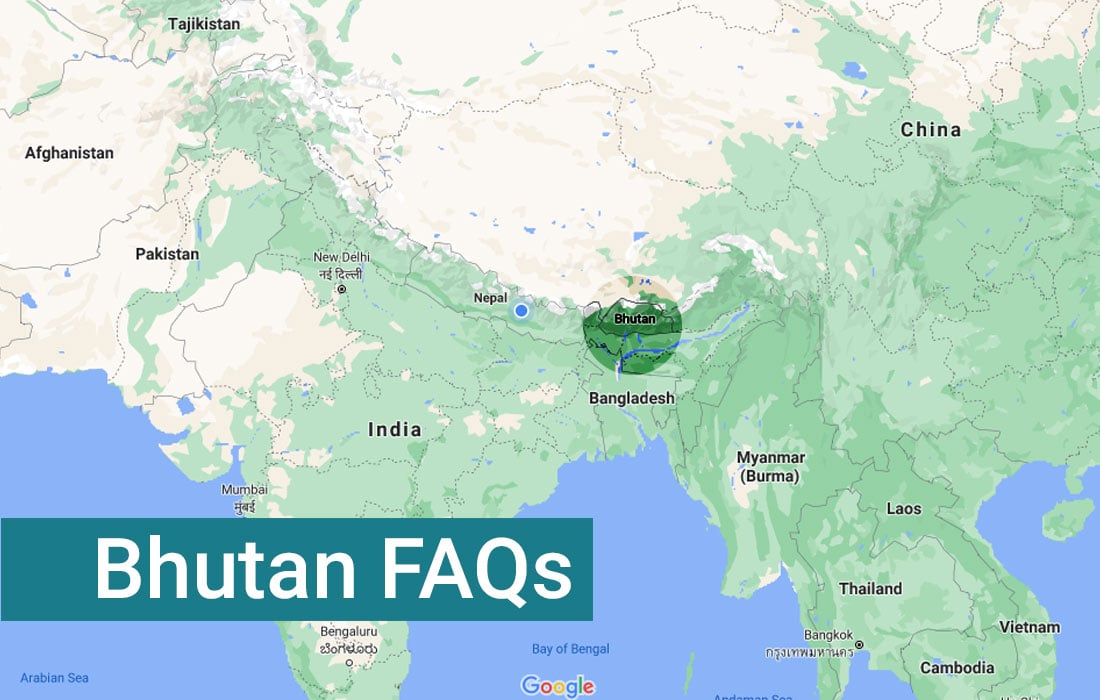

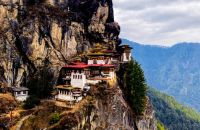
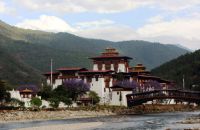
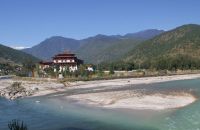

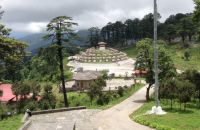
















Recent Comments